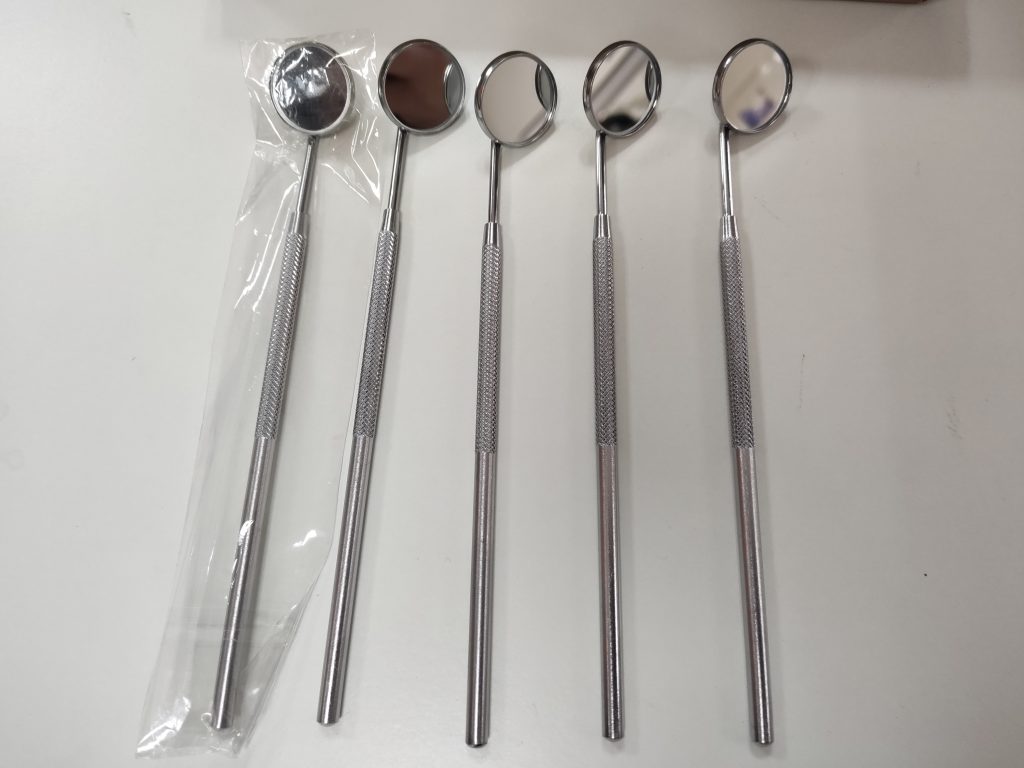Products Info|Different characteristics and uses of dental mirror
Different characteristics and uses of dental mirror
Different characteristics and uses of dental mirror
Dental mirror, also known as dental mouthpiece, is a commonly used tool in dental treatment, mainly used to assist doctors in observing the internal conditions of the oral cavity. There are various types of dental mirrors, including front surface masks (also known as surface flat masks), concave masks, and flat masks. They each have different characteristics and uses.
Front surface mask:
This type of mask has a reflective surface on the front surface of glass, and its mirror image has no deformation, resulting in good imaging quality, making it the most commonly used. However, the reflective surface of this type of mask mirror is easily scratched.
Concave face mask:
The reflective surface of this mask is on the front surface of the mask lens, which can produce a magnified mirror image. Although the magnification effect is helpful for observation, it can deform the mirror image, so it is not recommended for situations that require high-precision observation.
Flat mask:
The reflective surface of this mask is on the back surface of the mask lens, which can produce ghosting. Due to ghosting interference, this type of mask is also not recommended for use.

The main uses of dental mirrors include:
Obtaining indirect field of view:
Dental mirrors can help doctors observe tooth surfaces or internal oral structures that cannot be directly seen.
Pulling:
The oral lens can be used to pull the patient’s cheeks, mucosa, or tongue, so that the doctor can see the surface of the teeth covered by these soft tissues.
Indirect lighting:
Masks can also reflect light onto the dark areas inside the mouth for better observation by doctors.
When using dental mirrors, there are some tips to help prevent fogging on the reflective surface, such as warming the reflective surface with the patient’s cheek mucosa or using a specialized anti fog solution to wipe the reflective surface.
In addition, when using a dental mirror, it is also important to avoid hitting the patient’s teeth and not letting the edge of the oral lens press against the patient’s gum tissue.
In summary, different types of dental mirrors have different characteristics and uses, and doctors should choose the appropriate type of oral mirror according to specific needs.
Meanwhile, attention should also be paid to some details during use to ensure safe and effective treatment outcomes.

